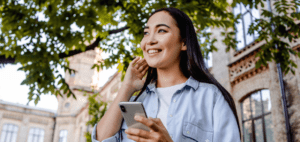Morrigan: The Fearless Celtic Goddess of War
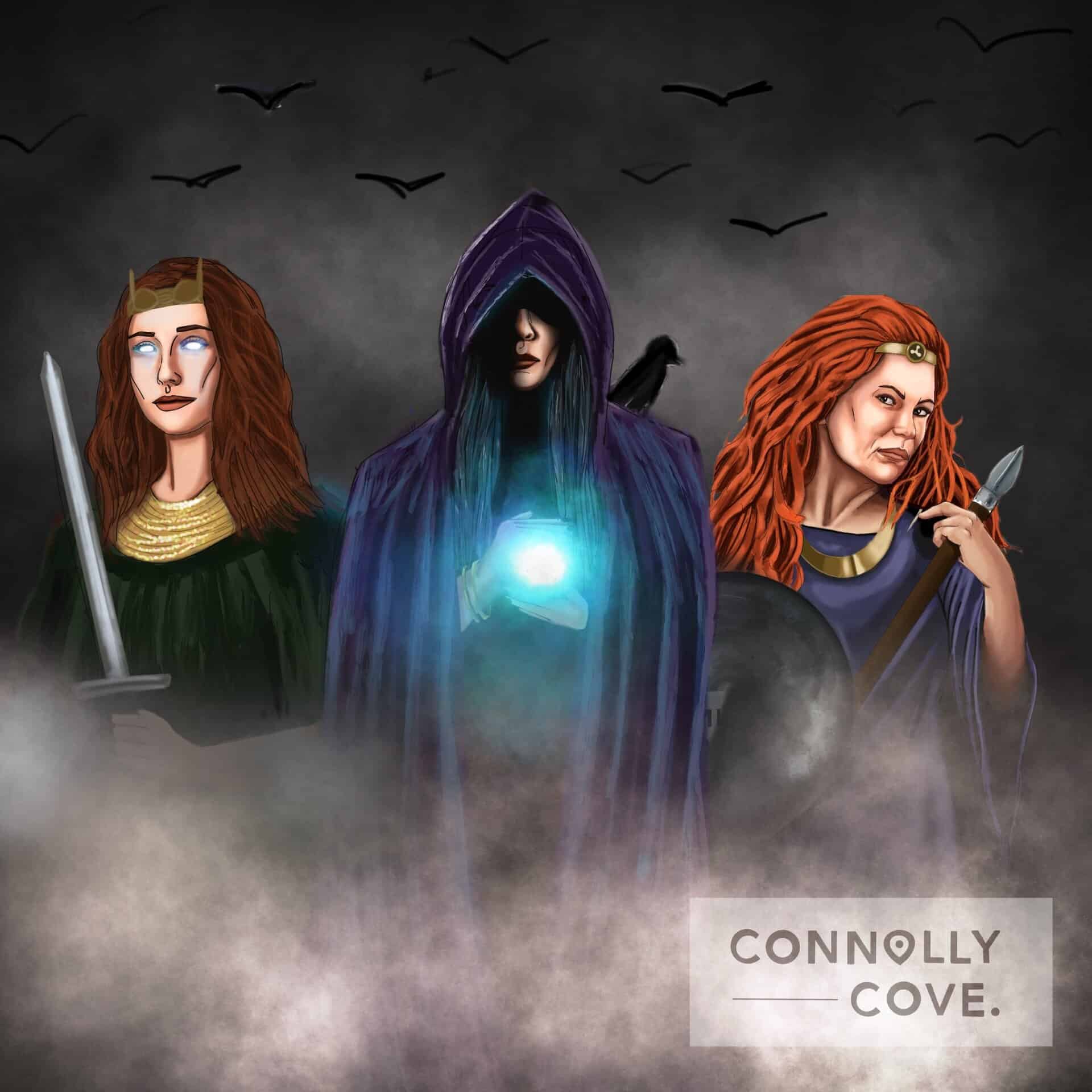
Updated On: April 07, 2024 by ConnollyCove
Morrigan is one of the great Goddesses of Ireland and a multifaceted character in mythology. Portrayed as the Fearless Celtic Goddess of War, she is both one goddess, Morrigan, and a trinity of sisters known as The Morrigan or The Morrigu.
The three sisters who make up The Morrigan are Badb, Nemain, and Macha. Together, they control the three aspects of war: Fate and Death, Havoc and Fear. These sisters are shapeshifters and often take the form of many different animals.
The Morrigan was known for having control over life and death. Although the sisters rarely fought in wars directly, they often influenced the battles. They would fly over the battlefield as a crow, appearing as an omen of death and striking fear in the minds of soldiers who saw them.
The Morrigan, the Celtic goddess of War, represented the circle of life and was associated with birth and death. She is also described as being the patroness of revenge, magic, priestesses, night, and witches. Join us as we delve into the history of Morrigan and explore the stories that made her one of the most popular goddesses in Irish and Celtic mythology.
In this article, you will find the following sections as listed below. Please scroll down to read them all or click on a specific heading to jump to the content in that portion of the article.
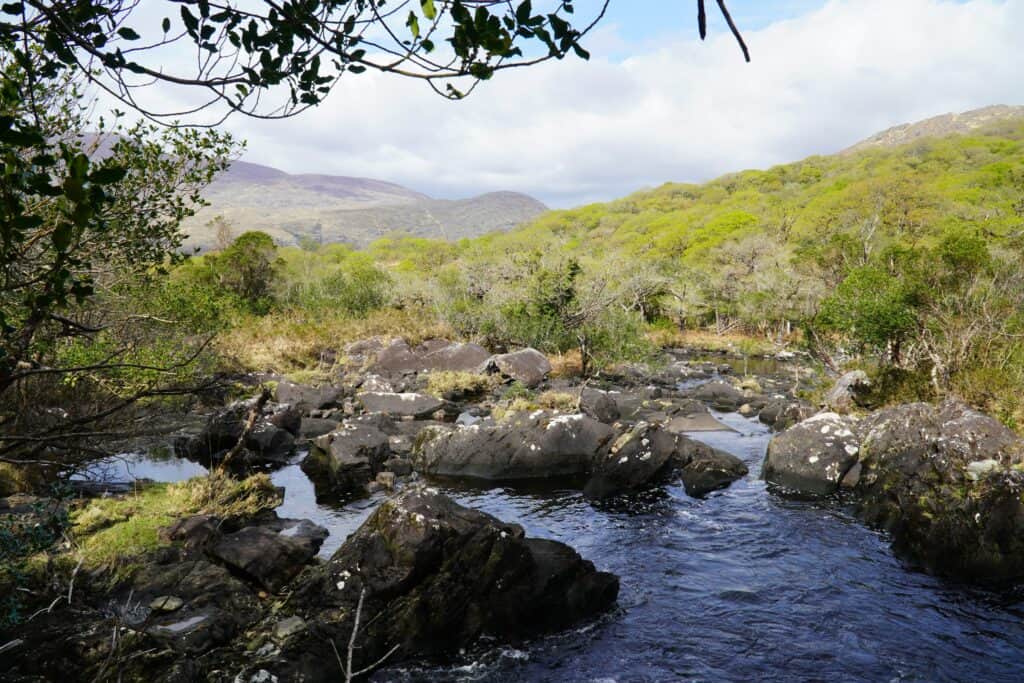
Table of Contents
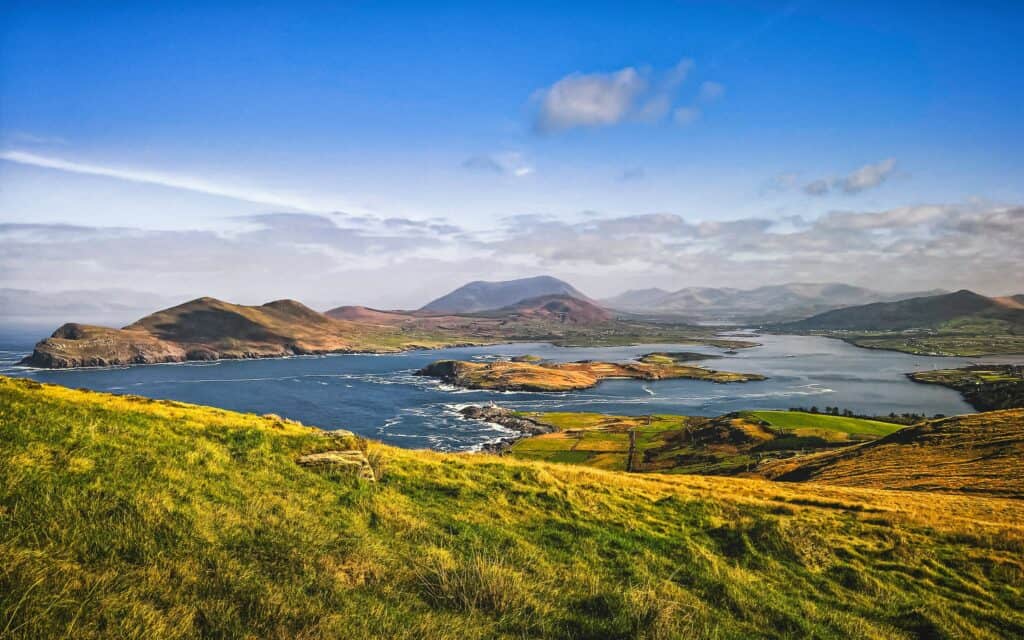
A Note on the Ambiguity of Celtic Mythology
It wasn’t until the 5th century that Celtic mythology was finally written down. Before this, only word of mouth passed mythology down through generations over hundreds of years. It is believed that the Christian monks first recorded the mythological history of Ireland.
It is important to remember this because some events have been altered throughout history or left out entirely to accommodate Christian values. Also, because the stories of Irish mythology have been spread by so many people over the years, it is common for stories to have multiple variations.
Similarly, names across Irish and Celtic mythology can vary. The main mythos of Celtic mythology consistently describe the Morrigan as three sisters. However, their names often vary. Morrigan, Morigú, Morrigana, Macha, Nemain, Badb, Medb, Anaid, Ériu, Banba, and Fódla are all possible names, depending on the tale you read.
Regardless of the spelling variations, the Morrigan are typically three distinct powers with different abilities or one divine entity. The Morrigan can be both a single goddess and a trio of sisters because being mysterious is an element of the Morrigan’s character. Her true nature is seemingly unknown.
Although many stories of Irish and Celtic mythology have been lost to time, many legends remain preserved in Irish history. To help categorise these tales, Celtic mythology is divided into 4 cycles. The Four Cycles of Irish Myth are as follows:
- The Mythological Cycle
- The Ulster Cycle
- The Fenian Cycle
- The King Cycle
Each cycle is comprised of related legends, and each cycle is characterised by the different levels of realism and myth in its stories.
The Morrigan and the Tuatha Dé Danann
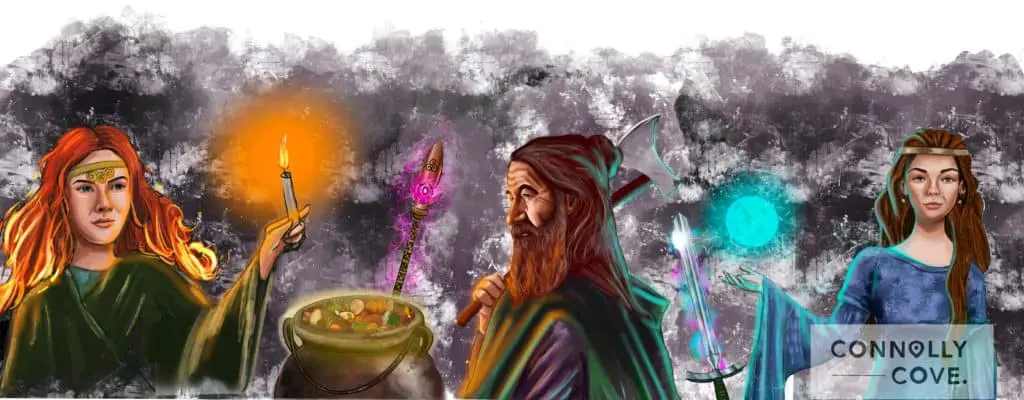
Most Celtic Gods and Goddesses were members of the Tuatha Dé Danann, one of Ireland’s most ancient and supernatural tribes. These Gods and Goddesses were the Gods of the Celts and ancestors of an ancient Irish people.
The Tuatha Dé Dannan were a group of Celtic Gods and Goddesses descended from Nemed. They originally lived in Ireland, but they were exiled and scattered all around the world. When Goddess Danu, the original Celtic Deity, learned about them, she offered the Tuatha Dé Dannan her support.
The Tuatha Dé Dannan lived under her patronage in a mystical country (believed to have been the Otherworld called Tír na nÓg), where they learned magical skills and mended their broken strength.
The Origins of Morrighan, the Celtic Goddess of War
The term “The Morrighan” translates into the Phantom Queen. Scholars also suggest that this term can be translated into the Great Queen. Both potential meanings fit the portrayal of the Celtic Goddess of War since she powerfully represents the circle of life.
To truly gain a more insightful understanding of who Morrigan is, it’s essential to understand the Celtic culture of that era. The Celts idolised warfare, and women were warriors up until 697 CE, often fighting in battle or helping the wounded. Protecting their families and land was a dominant aspect of the Celt’s pride and was reflected in the Morrigan.
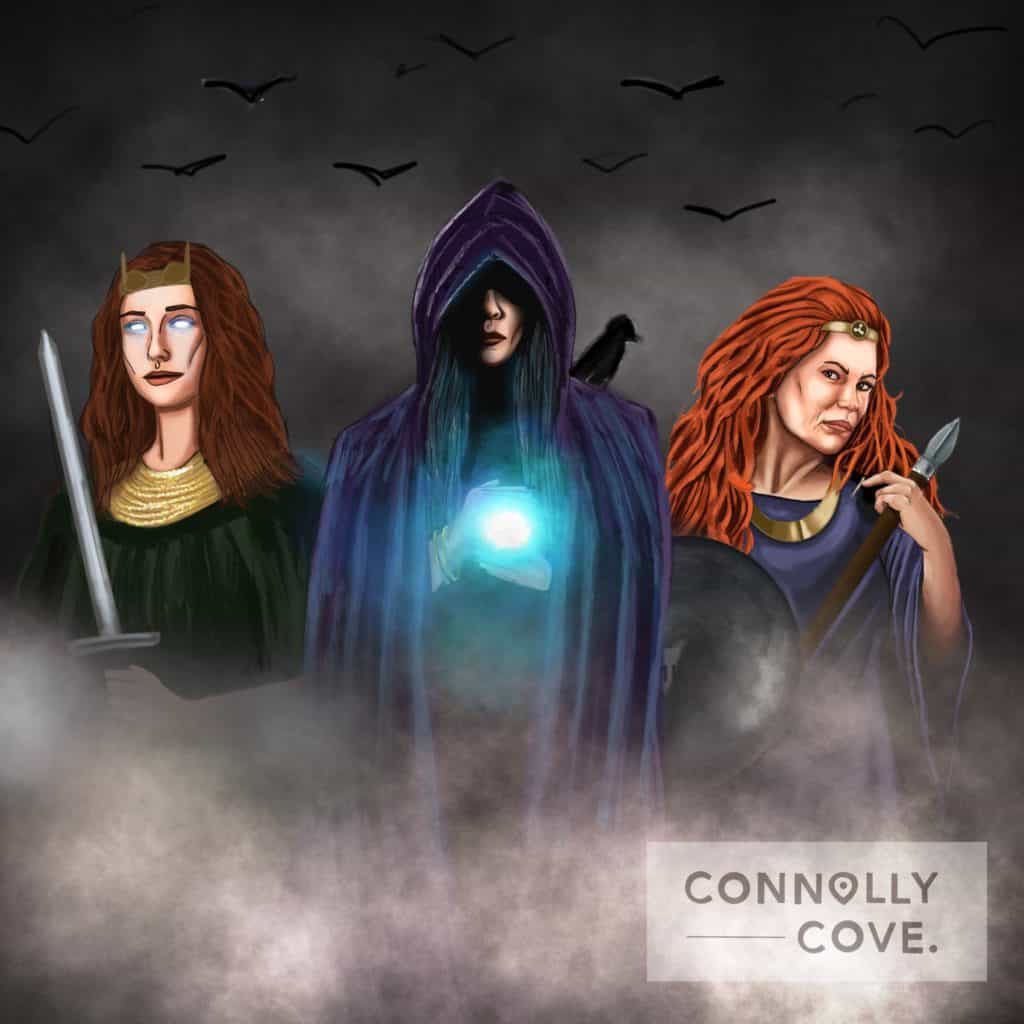
The complexity of the Morrighan begins with her nature. She appears in mythology as one individual Goddess. However, her name is also a title applied to her two sisters, Badb and Macha, her nieces Fea and Nemain, and several other Irish Goddesses at later points.
The Complexity of the Sisters
There is no firm boundary nor easy line to draw that separates one sister from the others. This adds to the mysterious nature of the Morrigan; it could be the name of one sister or the collective title of the three. In most cases, both interpretations of the goddess are accepted.
They are goddesses, after all. The Celts would have accepted that they could not understand everything about the Morrigan and that some aspects of the mythical beings were not for humans to understand. Considering her association with the macabre, they probably wouldn’t have wanted to know every aspect of her character.
The three sisters were War deities, each overseeing a different aspect of war. Morrigù was the youngest and was in charge of acknowledging the heroes and inspiring courage. Heroes would often ask her to help them win battles before fights. They ultimately knew they would win if they felt the Morrigan was on their side.
Badb would often take the form of a flying crow and took care of reaping lives on the battlefield. Also known as Eriu, her name later became the Gaelic name of Ireland, Eireann. She rarely interfered with war directly. Instead, she would only be seen flying over the battleground as a crow.
Macha was the general leading the divine armies. According to Legend, there were three prophecy sisters whom Ireland is named after. Some people say that these sisters are, in fact, the Morrigan trio; however, sometimes the prophecy sisters were seen as separate goddesses from the Morrigan.
The Three Sisters: Badb, Nemain and Macha
Badb / Morrighan
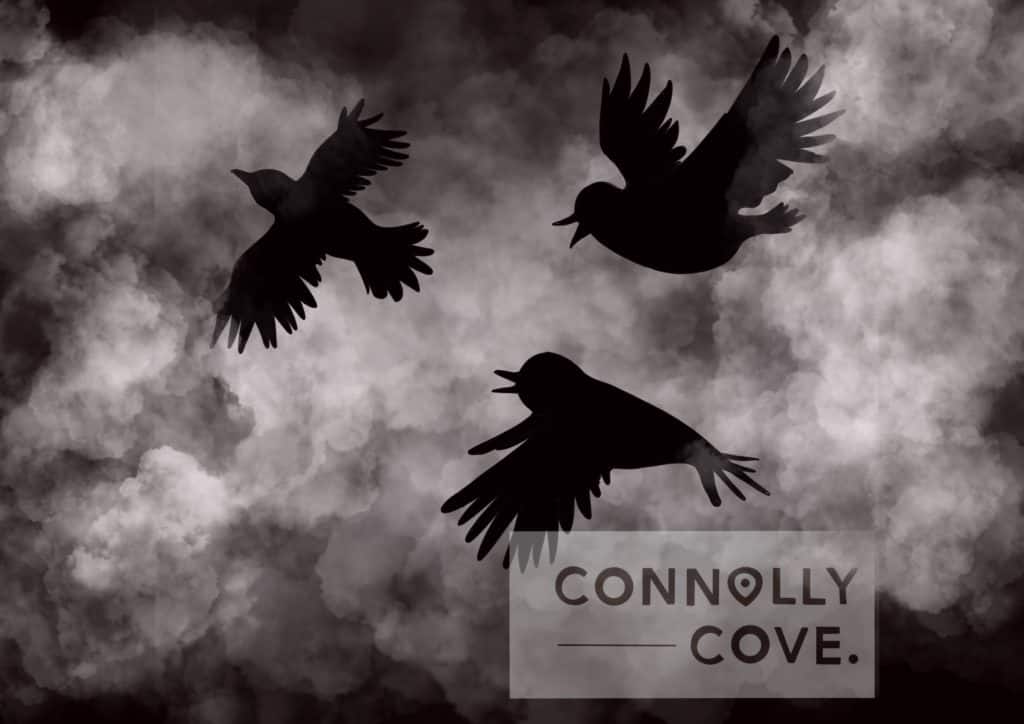
Badb (pronounced bibe) is known as The Prophetess. She is A Celtic Goddess of War primarily associated with battle, destruction, and death. Badb translates to “crow, ” as she often appeared as a hooded crow over battle. The goddess was occasionally seen running alongside warriors disguised as a grey-red wolf.
A flock of crows is known as a murder of crows. This could reference the Morrigan, who used to fly over battlefields in crow form as a symbol of death.
She was sometimes called Badb Catha (pronounced bibe kah-ha) or “battle crow.” Badb was reported to join the fray on the battlefield in her female form. She used magic and a sword to defeat her foes. She was known to play favourites, and her presence would cause confusion and terror among the soldiers on the opposing side.
But Badb was also a guide, ferrying souls from death after the battle to their rebirth in the next world. She straddled the mortal realm and the realm of spirits, hence her power as a prophetess.
Just because you had Morrigan’s favour on your side of the war didn’t mean there wouldn’t be casualties on both sides or that you specifically would survive to see the victory. Both armies’ fighters would dread seeing her fly above them, fearing it was a sign of their death.
After the battle, the armies would wait a day to bury their comrades, letting the Morrigan claim the souls of the dead first.
Anann / Nemain
Anann (pronounced on-an) is the Celtic Goddess associated with fertility, cattle, war, and prosperity. She is responsible for culling out the weak. In the context of war, she was known to ease the passing of those dying on the battlefield, where she would comfort them in the form of Death itself.
Anann was a prophetess; her battle cries meant death would soon follow. By shrieking furiously, she intimidated, panicked, and confused soldiers on the battlefield into dying of fright or mistaking their comrades for enemies.
This aspect connects the Morrigan to the role of Banshee. In some modern writings, this goddess is named Nemain. That name translates to ‘panic’, ‘frenzy’ or ‘venomous’. It seems contradictory that Anann and Nemain are the same person, considering that Anann comforted the dying, and Nemain translates to ‘panic’.
Do you think they were separate sisters or one goddess playing the two sides of the inevitable horrors of war?
Macha
Macha (pronounced ‘mak-kha‘) is the Celtic Goddess associated with war, ravens, horses, land and sovereignty. She is seen several times in legend, but probably the most familiar tale casts her as the wife of a man named Crunniuc.
The root word “mag” translates to field, plain or pasture. This name connects the goddess to the earth and gives Macha power over the sacred land and horses. Her name represents her wealth and power and symbolises elite warriors. As part of the Trinity of sisters, she could summon a furious rain of fire and blood on her enemies.
Many tales confuse Macha and the Goddess Morrigan. Both usually appear as crows on the battlefields and manipulate the battles’ results. However, the main difference is that Macha appeared more famously as a horse in mythos.
The Three Versions of Macha
The Celtic folk tales feature three versions of Macha. Each version illustrated Macha with specific personalities and traits, but they were all equally interesting. One thing that the three versions had in common was that Ernmas was her mother.
First Version
The first version of the tale states that Macha’s husband was Nemed, not Crunniuc. The literal meaning of Nemed is Sacred. He invaded Ireland before the Tuatha Dé Danann even arrived. He fought in a battle against the Fomorians and, after securing victory, stayed in Ireland.
Legends claim that a race called the Nemeds resided in Ireland long before the Tuatha Dé Danann, no doubt named after their sacred leader.
Second Version
The second version of Macha referred to her as Mong Ruadh. This name means Red Hair. In this tale, she was both a warrior and a queen. Macha had beaten her rivals and had power over them; she forced them to build Emain Macha or Navan Fort for her.
Third Version
The third version is the one we stated at the beginning, in which Macha was the wife of Crunniuc. This is the most popular interpretation.
Macha appeared in several tales; however, one in particular was the most important. This tale features the third version of Macha. The story revolved around Macha, who had supernatural powers. Due to her shapeshifting ability, she could outrun any creature on earth, even the fastest animals.
Crunniuc was her husband in this legend, and she asked him to conceal her magical powers. She did not want anyone to know what she could do. However, her husband ignored her demand and bragged about his wife before the King of Ulster.
The king was interested in the secret Crunniuc divulged and ordered his men to capture Macha, who was pregnant then. He wanted her to run against horses in a race, not caring about her condition as a pregnant woman.
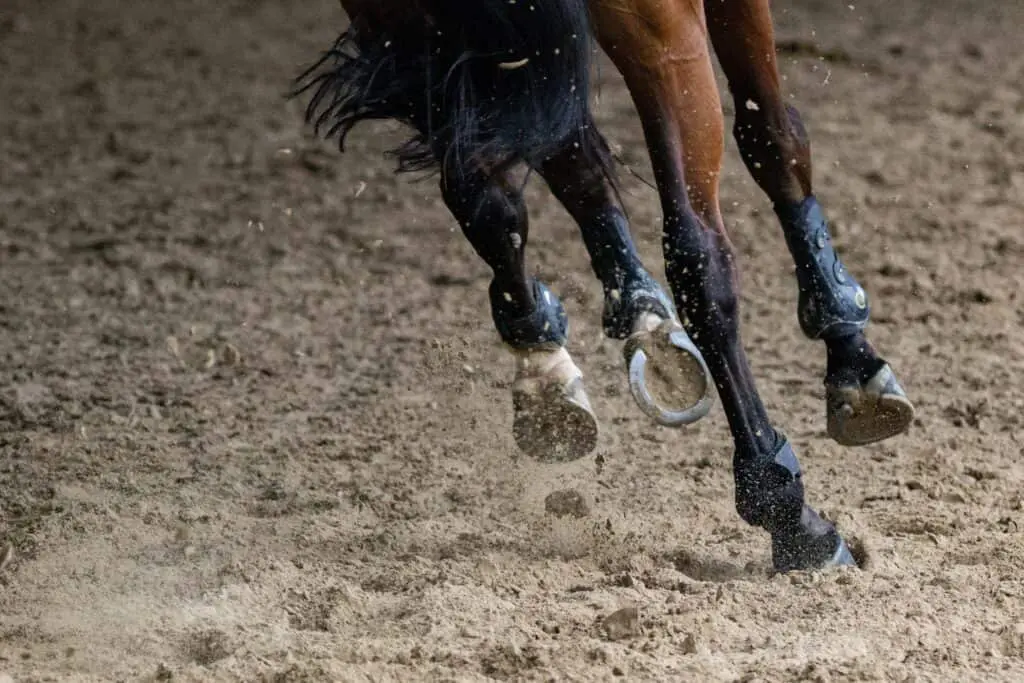
Macha was forced to do what the king had asked. She ran the race, and surprisingly, she won. However, her condition started to deteriorate as soon as she crossed the finish line. She gave birth at the end of the race, and she was in extreme pain.
One variation claimed that she died after giving birth to twins. The most popular version of the story ended with Macha cursing all the men of Ulster while she was dying. She wanted them to endure the pain of childbirth and suffer as they made her do.
Another variation of this legend continued in the story of Queen Maeve’s Cattle raid of Cooley. Macha survived the race, cursing the men of Ulster as revenge for nearly killing her. This helps Queen Maeve of Connacht, who is at war with Ulster, to steal the horse.
Macha’s connection to Queen Maeve
Queen Maeve is believed to be a manifestation of the Sovereignty Goddess of the Tuatha Dé Danann, Medb Lethderg of Tara. She is also linked with the Morrígan, the three sisters and Goddesses of War: Badbh, Macha and the Mórrigan.
It’s possible that Macha, the goddess of war and sovereignty, is also an interpretation of Medb. Medb or Macha is the Celtic Goddess of Sovereignty, Land and Intoxication. Some theories state that Maeve is a reincarnation of the goddess in human form, but one of the joys of folklore is that it changes to suit the needs of a story. There is no definitive answer!
While the Goddesses Medb and Macha are two different characters in mythology, it is not unusual in Irish folklore for a character to appear under many names. Some Gods and Goddesses may have another name due to the variations that emerge in the stories over time.
Additionally, they may only use one specific power of many in a story, which can lead to confusion. The three figures mentioned share common personalities and traits, such as being strong-willed, stubborn, ambitious, cunning, and promiscuous. They are all seen as archetypal warrior queens.
Morrigan and the Banshee
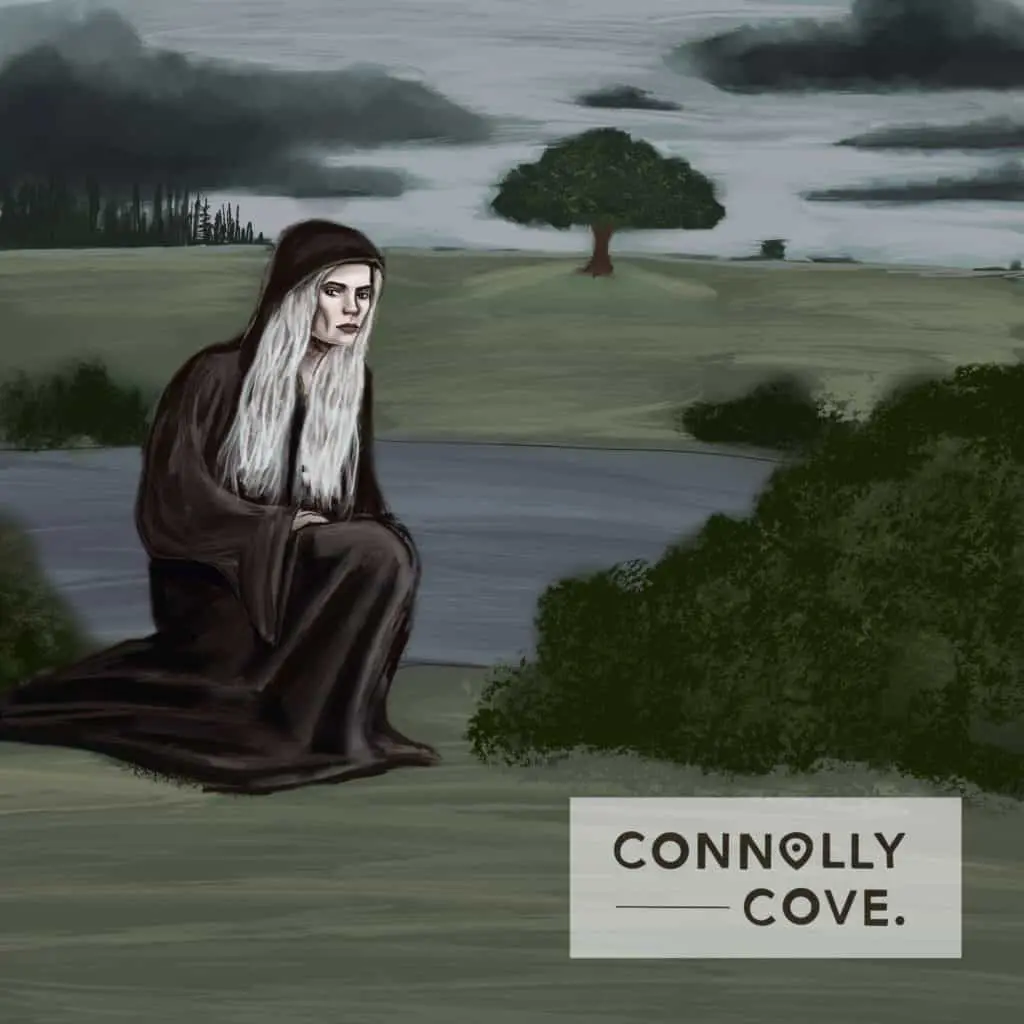
In some stories, the Morrighan is sometimes associated with the banshee, mainly because she is seen washing armour by the river before the battle. The Banshee is a type of lone fairy. The connection between the two is the similarity of washing armour and the general association with death.
It is worth noting that the Morrigan was a shapeshifter and could transform into a banshee if she wanted to. However, this theory explains the link between the Goddess and the fairy.
Despite her popularity as the war goddess, some scholars believe Morrighan’s connection to war was only a form of protection. Some legends call her “The Washer at the Ford” because if a warrior saw her washing his armour, it was a sign that he would die in the next battle.
Even if warriors saw the goddess washing their armour, they would choose to fight to preserve their pride. Morrigan also controlled the outcome of battles, and winning the favour of Morrigan could ensure victory, although a soldier’s life was never guaranteed.
The Three Goddesses of Prophecy
Ogma was the father of three sons, Mac Cuill, Mac Cecht and Mac Gréine. The three sons of Ogma eventually became married to three sisters. Those sisters were Eire, Fotla, and Banba. They each had the talents of prophecy and prediction.
When the Tuatha Dé Danann was heading to Ireland, the land’s name was Innisfail. The three sisters had predicted their arrival, and many incidents occurred afterwards. Ogma promised to name the land after one of them, specifically after the sister who made the most accurate predictions about the Tuatha Dé Danann.
Éire (pronounced air-ah) was the most accurate in her prophecies. Thus, as soon as the Tuatha Dé Danann reached the shores of Innisfail, they called it the land of Éire. The English version of the name Éire or Éireann (pronounced air-en) is Ireland, which everyone is familiar with today.
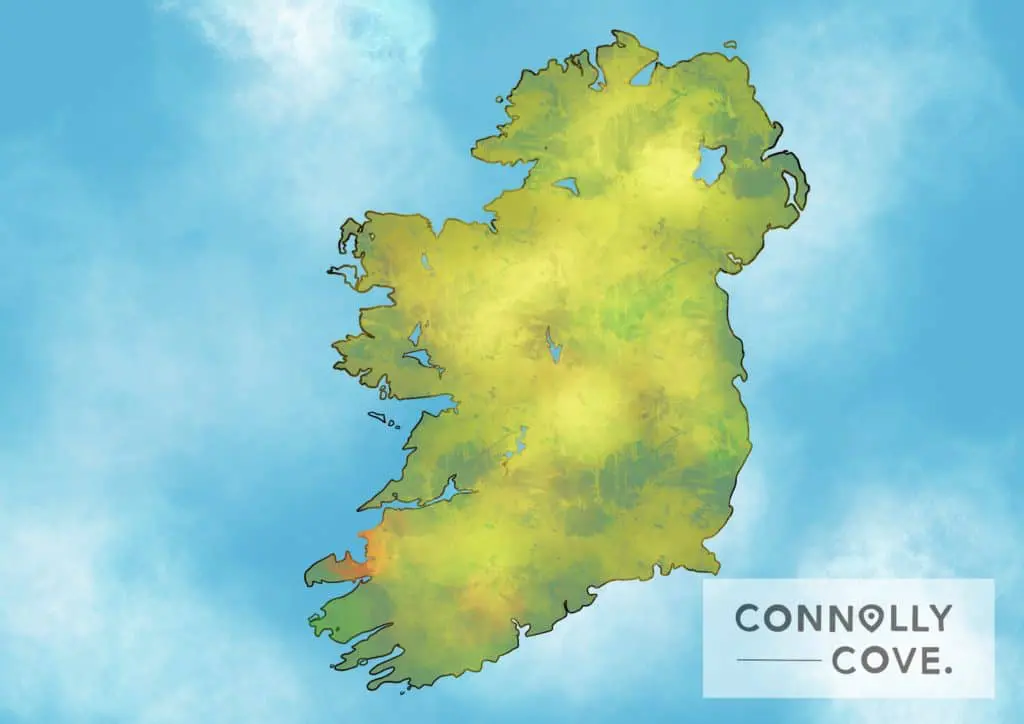
The prophecy sisters and the Goddesses of War are often theorised to be the exact figures under different names due to their shared skills of prophecy. What do you think?
Morrigan’s Archetypes
Shapeshifter
The Shapeshifters can change their physical appearance into different humans, animals, and mystical beings. By altering their behaviour, they can also quickly adapt to various environments.
Ancient Celtic mythology tells us that the Morrigan can appear as a crow, raven, wolf, a beautiful young woman with long hair, or a grey-haired hag. The Tain Bo Regamna describes her as a red-haired woman dressed in a red cloak.
However, to our knowledge, no surviving images of her from the Irish pagan period exist. Although a quick internet search will reveal a plethora of new images of the Morrigan, some are born from mythological descriptions, and most are artistic interpretations. The diversity of modern depictions is dizzying, contradictory, and sometimes frustrating.
In seeking to find what the Morrigan looks like, you will see everything from beautiful women wielding swords to well-muscled armoured warriors, from old hags with piercing eyes to serene figures bearing wings, or dark-haired warriors with war tattoos and eyes as black as crows.
Each interpretation is vastly different, yet they fittingly add to Morrigan’s mysterious nature. It is no coincidence that a vague and varied description would characterise such a mysterious character.
The Crow as an Omen of Death
Morrigan, the Celtic Goddess of War, was a formidable and enigmatic figure in Irish mythology with an awe-inspiring ability to shapeshift into a crow. This attribute encapsulates the mystique surrounding her character.
Her transformation into a crow represents the deep connection between Morrigan and the natural world. Celtic folklore revered crows as messengers of the Otherworld and symbols of death and rebirth. Morrigan’s association with the ominous and symbolic creature symbolises her role as a sign of change, particularly in conflict.
The crow’s association with death provides valuable insight into why Morrigan’s presence was regarded as a symbol of doom and destruction. In Celtic belief, crows were often seen scavenging battlefields, feeding on the remains of fallen warriors.
This macabre behaviour contributed to their reputation as omens of death, symbolizing the grim aftermath of warfare. Morrigan’s choice to embody a crow during pivotal moments of battle thus carries a foreboding message.
It served as a chilling reminder that mortality is inescapable in times of war. It also highlighted that the goddess herself actively decided the fate of those who took up arms.
Furthermore, Morrigan’s association with death extends beyond the battlefield, encompassing the broader concept of transformation and change. The crow’s ability to soar through the skies, crossing boundaries between the dead and the living, mirrors Morrigan’s role as an omen and a guide who leads spirits to the afterlife.
Her presence as a crow signifies the immediate physical consequences of battle and the transformative potential that emerges from the ashes of destruction. Morrigan embodies the duality of life and death, symbolizing that even in the darkest moments, there is room for rebirth and renewal.
The Morrigan and Cú Chulainn (Cuchulainn)
Morrighan appears to Cú Chulainn as a young woman (or hag, depending on the source and variation of the legend) to offer him her love and aid in the battle, but he rejects her offer. In response, Morrigan grew angry, and she intervened in his next combat.
Morrigan first appears as an eel who trips him, then as a wolf who stampedes cattle across the ford. Finally, Morrigan shows up as a white, red-eared heifer leading the stampede, just as she had warned in their previous encounter.
In folklore, the Morrigan and Cú Chulainn had a very interesting relationship. The Irish goddess of War often foretold prophecies of his demise. She was sometimes enamoured with the hero, but her love was unrequited, so she frequently appeared as a foil to his epic adventures. Morrigan would cast spells to thwart his victories.
Of course, being the hero that he was, the warrior always emerged triumphant. However, this was not the first or only time that Morrigan used her shapeshifting ability to seek vengeance after rejection.
The Cattle Raid of Cooley
In the story of the Cattle Raid of Cooley, a famous epic featuring Queen Medb of Connacht, the Morrigan attempted to seduce the warrior Cú Chulainn. However, he rejected her. She could not accept this, so she decided to seek revenge.
The Goddess Morrighan used her ability to shapeshift in order to distract Cú Chulainn and ruin his plans. Staying near him was her best way to gain inner strength because his blessings could heal the wounded.
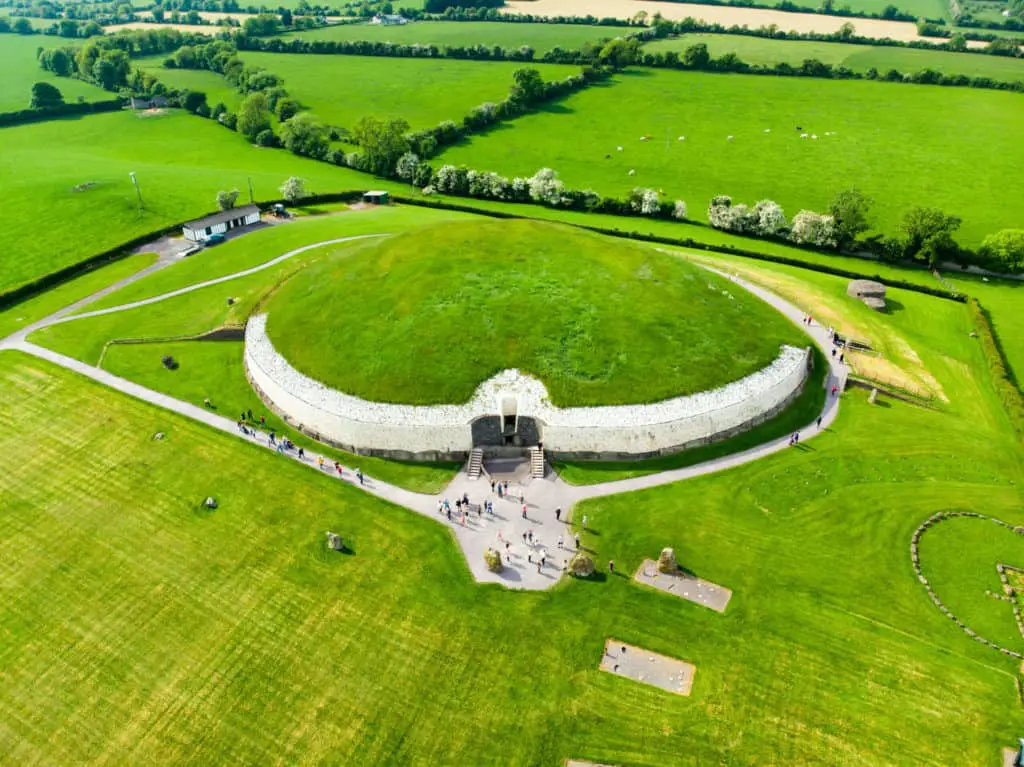
The first time she appeared to him after the rejection, she took the form of a bull. She tried to make him lose track of his path and told him he had to run away. Cú Chulainn did not listen to her and instead kept going on his way.
The Morrighan appeared as an eel the second time and attempted to make the warrior trip over. If he stumbled over, she could use her magic on him and gain more strength. She failed once again and lost even more power.
For the third time, Morrigan appears in the form of a wolf. She tries to scare Cú Chulainn and send him off his track, but he defeats her again. She is unsuccessful in stopping him from continuing on his path.
After three defeats, the Morrigan stopped changing into animals or strange creatures and decided to take human form. She had endured many injuries in her previous animal states and had become weakened. In her final attempt at distracting Cú Chulainn, she appeared to him as a frail older woman milking a cow.
A long line of warriors set against Cú Chulainn, including his foster brother (who was tricked by the Queen of Connacht), intending to kill him. Cú Chulainn ended up slaying his brother, and many other soldiers were mortally wounded.
Afterwards, the warrior was wracked with pain, sadness, and physical wounds from the battle. He retreated to rest, grieve and heal before the final fight. Cú Chulainn, weary after the war, could not recognise Morrigan’s trickery and approached the older woman.
She offered him milk to drink, and he accepted it. He was grateful for the drink and, in return, blessed the old lady three times after she gave him three drinks. These blessings restored the Morrigan to total health and strength.
In some versions of the story, Cú Chulainn was unaware that Morrigan was the one who had been making advances towards him. After she is healed, he explains that he would never have insulted her by rejecting her so harshly if he realised who she was.
Morrigan accepted his apology and left him alone after being restored in health and strength.
What happened to the hero, Cú Chulainn? Well, the tale ends no better for him. He was killed in a battle many years later, though. This was no surprise to The Morrigan, as her old Crone was able to predict his death.
The Meeting at Samhain
Morrigan met Dagda, the King of the Tuatha Dé Danann, at Samhain. The Daghda is one of the most essential Celtic Gods in Irish mythology. He is the father figure of all the Gods and Goddesses. Dagda had many abilities, including controlling life, death and resurrection.
This power alone gave him control over almost everything, yet he was mostly known for his wisdom, strength and love of the arts. Moreover, the Dagda was linked to fertility and magic. He also had control over the seasons, the passage of time, the crops, and the weather.
The Dagda lived in northern Ireland and was told to meet a woman there before an upcoming battle. He found the woman washing in the river Unis of Connacht, which flowed just south of his home.
The woman he found was the Morrigan. She had nine loosened tresses on her head and instantly captivated the king. The Dagda spoke with her, and the Morrigan told him how to win the battle. She aided the Tuatha Dé Danann in their fight, and once they had won, she proclaimed the victory to the royal heights of Ireland.
Historical Sites Related to Morrigan, the Goddess of Death & War
There are several sites associated with the Morrighan in Northern Ireland. One such place is a county town known as Armagh, which translates as “Macha’s Height” or “Machas’s High Place”. The Dá Chich na Morrigna (“Two Breasts of the Morrigan”) is a pair of hills in Co. Armagh that were considered the capital of Ulster in the chronicles of the Ulster Cycle.
In the county of Louth, there is a field known as Gort na Morrighan (Morrigan’s Field), which was said to be given to her by the Dagda. Boa Island, the largest island in Northern Ireland, was named after Badb. There are many more significant sites around Ireland, so keep an eye out as you journey through the country.
In addition to sites around Ireland and Northern Ireland, there are places worldwide with connections to the Morrigan. For example, inscriptions invoking the Cahaboduva (Battle Raven) have been found in the Drome region of France.
Frequently Asked Questions about the Morrigan Goddess:
What is the Morrigan the Goddess of?
The Morrighan was the Pagan and Celtic Goddess of War. She was also a Goddess of Fate, Life and Death, Wisdom, Prophecy, and the Land. She is described as the Patroness of Revenge, Magic, Priestesses, Night, and Witches.
What were the Morrigan’s Abilities / What Powers did the Morrigan have?
The Morrigan could shapeshift and dramatically change her appearance. She could take the form of many animals, humans, and mystical creatures. The Morrigan was most often seen in the form of a crow.
Another ability that Morrigan possessed was the power to control the fate of wars and foretold prophecies. Soldiers and warriors vied for her favour in battle, as she was known to choose favourites and use her powers to help them win. If the men could get Morrigan to help them in the fight, there was no way that their side would lose.
What Three Goddesses make up the Morrigan?
Badb, Macha, and Nemain were the sisters who made up the Morrigan. Other possible sisters’ names include Morigú, Morrigana, Medb, Anaid, Ériu, Banba, and Fódla. These variations come from the evolutions of the stories as they were passed along generations.
The Morrighan was not always associated with the three sisters. Sometimes, the Morrighan was a single deity. This will change depending on the legends you read.

What Animals Are Associated with the Morrigan?
The Morrigan is most associated with Crows. She was most known for flying over battlefields as a crow to symbolise the deaths that followed. However, in different legends of Irish mythology, Morrigan also appears as a raven, wolf, heifer, and even an old woman.
What was the Symbol of the Morrigan?
The symbol of the Morrigan varied because she was a shapeshifter and because different variations of legends emerged over time. Typically, the crow is the symbol most associated with the Morrigan.
Why do They Call her the Morrigan?
The Morrigan derivates old Gaelic and means ‘Great Queen’ or ‘Phantom Queen’. Her name has many different spelling variations, such as Morrighan, The Morrigu, Morrigana, and more.
Some legends even consider Macha and Morrígan to be the same deity.
Is the Morrigan a Banshee?
The Morrighan is associated with the banshee as they are both found in rivers, washing the armour of someone about to die. The Banshee is a type of lone fairy who foretells death with her shrieks, alerting the loved ones of their death.
It has also been speculated that because she could shapeshift, Morrigan may have been able to take the form of a Banshee, but this is just a theory.
Is the Morrigan an Evil Goddess?
Although the Morrighan’s association with death and the macabre leads many to assume she was an evil goddess, she helped the Tuatha Dé Danann win many of their battles.
She was associated with death, which is a dark but natural part of the life cycle. Before a battle, she warned people of their doom and guided the souls of the dead to the afterlife. The Morrigan was far from an evil spirit.
What does the Morrigan look like?
To our knowledge, no surviving images of the Morrigan from the Irish pagan period exist. The diversity of modern depictions varies greatly and can contradict each other. Some depictions of the goddess were born from mythological descriptions. However, many are simply an artist’s interpretation.
Depictions of the Morrigan range from beautiful women wielding swords to well-muscled armoured warriors. Some interpretations show her as an old hag with piercing eyes or serene figures bearing wings. She has even been depicted as a dark-haired warrior with war tattoos and eyes as black as crows.
Each variation is different, which adds to the allure of the Morrigan’s mysterious nature.
Final Thoughts on The Morrigan
The Morrighan is a complex Goddess or triple Goddess. The surviving myths and legends of Irish folklore tell us a great deal about her and her powers.
Across all the tales of this mysterious Goddess, one thing is sure: the Morrigan was the fearless Celtic Goddess of War and Death.
Check out our other blogs that might interest you:
The Whole History of the Tuatha Dé Denann: Ireland’s Most Ancient Race| Dive into the Finest Legends and Tales of Irish Mythology| Leprechauns: the Famous Tiny-Bodied Fairies in Ireland| The Superstitious Fairy Trees in Ireland|


